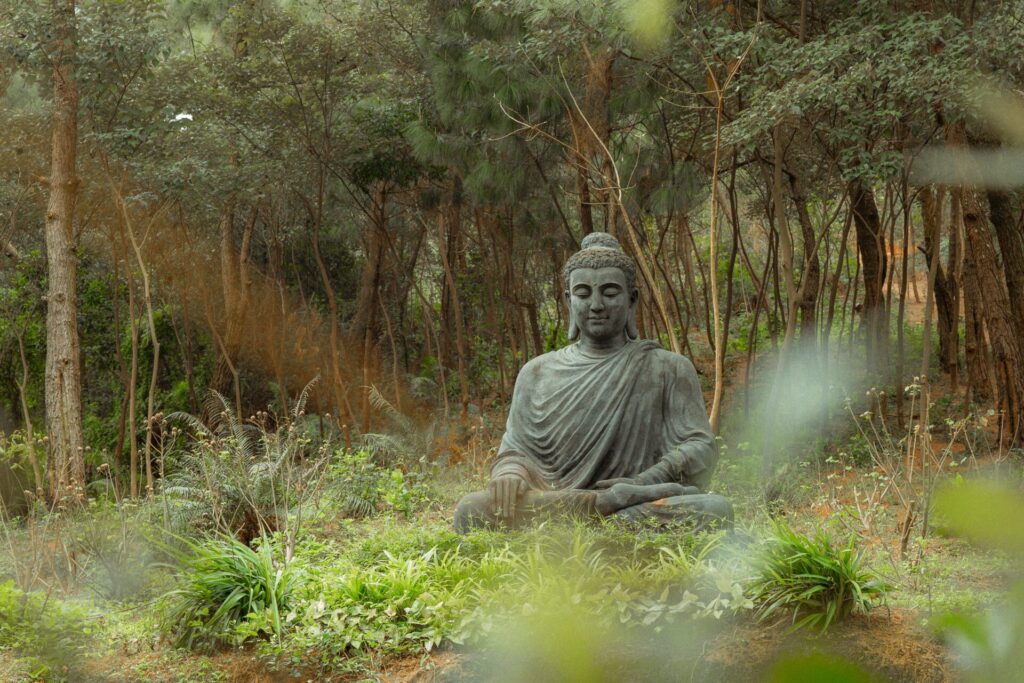
MEMORANDUM I
Record of my talk to the Buddhist Sasana Council of Burma
1. To spread Buddhism outside Burma be one of the aims of the Sasana Council then India is the first country they should make the centre of their effort. No other country; will yield so much as India will.
2. The reason is obvious. India is a birth-place of Buddhism. It flourished in India from 543 B.C to 1400 A.D i.e. for nearly 2000 years. Although the Buddhist Religion has vanished the name of the Buddha is still held in great veneration and the memory of His Religion is still green. In India Buddhism may be withered plant. But no one can say that it is dead at the roots. He is regarded by the Hindus as an Avtar of Vishnu. In India we don’t have to restore veneration for a new prophet or (X) has to do for his Gods among the Jews. All that we have to do is to bring back his religion. Such easy condition for a (X) effort cannot be found in any other country. In them there are well and long established religions and Buddhism would be regarded as an intruder without a passport. So far as India is concerned the Buddha needs no passport nor does he require any visa.
3. Thirdly there are sections among the Hindus who are eager to leave Hinduism and go over to Buddhism. Such are the Untouchables and the Backward Classes. They are against Hinduism because its doctrine of Chaturvarna which is best described as the doctrine of graded inequality. In the present stage of their intellectual awakening these classes are up in arms against Hinduism. Now is the time to take advantage of their discontent. They prefer Buddhism to Christianity on three grounds.
(i) Buddhism is not a religion which is alien to Indians
(ii) The essential doctrine of Buddhism is social equality which they want
(iii) Buddhism is a national religion in which there can be no room for superstition.
4. There should be hesitation in launching the movement on the ground that the majority of the people entering Buddhism in its early stages will be coming from lower classes. The Sasana council must not make the mistake which the Christian missionaries in India made. The Christian Missionaries began by attempting to convert the Brahmins. Their strategy was that if the Brahmans could be converted first the conversion of the rest of the Hindus would not be difficult. For they argued that is the Brahmins could be converted first they could go to the non-Brahmins and then “When the Brahmins have accepted Christianity why don’t you. They are the heads of your religion”. This strategy of the missionaries proved fatal to the spread of Christianity in India. The Brahmins did not become Christians. Why should they? They had all the advantages under Hinduism. The Christian missionaries in India realized their mistake and turned their attention to the Untouchables after wasting hundreds of years in their effort to convert the Brahmins. By the time they turned to the Untouchables the spirit of nationalism had grown up and everything alien including Christianity was regarded as inimical to the country. The result was that the Christian missionaries could convert very few untouchables. The Christian population in India is surprisingly small notwithstanding the missionary effort extending over 400 years. They might have converted the whole of Untouchables and the backward classes if they had begun with them first.
5. Attention may be drawn to the entry of Christianity in Rome. For it is very instructive. From the pages of Gibbon’s decline and fall of the Roman Empire, it is clear that Christianity entered first among the lower classes or as Gibbon says among the poor and despised section of the Roman population. The higher classes came in later on. Gibbon ridicules Christianity as a religion of the poor and the down-trodden. In holding his view Gibbon was thoroughly mistaken. He failed to realize that it is the poor who need religion,. For religion, if it is a right religion, gives hope of betterment to the poor who having nothing else need as a soothing action. The rich have everything. They need not live on hope. They live on their possessions. Secondly Gibbon failed to realise that religion if it is of the right type ennobles people and elevates them. People do not degrade religion.
6. I will now turn to the preliminary steps, which has to be taken for the revival of Buddhism in India. I mention below those that occur to me:
(i) The preparation of a Buddhist Gospel which could be a constant companion of the convert. The must of a small gospel containing the teachings of the Buddha is a great handicap in the propagation of Buddhism. The common man cannot be expected to read the 73 volumes of the Pali Canon. Christianity has a great advantage over Buddhism in having the message of Christ contained in a small booklet, The Bible. This handicap in the way of the propagation of Buddhism must be removed. In regard to the preparation of Buddha’ Gospel care must be taken to emphasize the point because I find that in most Buddhist countries what is emphasized, is meditation, contemplation and the Abidhamma. This way of presenting Buddhism to Indians would be fatal to our cause;
(ii) The introduction of a ceremony like Baptism in Christianity for the laity. There is really no ceremony of conversion i.e. for becoming a lay disciple of the Buddha. Whatever ceremony of conversion there is, is far becoming a Bhikku, for entering into the sangha. Among the Christians there are two ceremonies; for baptism showing acceptance of Christianity; and 2. For ordination i.e becoming a priest. In Buddhism there is no ceremony like baptism. This is the main reason why people after becoming Buddhist slip out of Buddhism. We must now introduce a ceremony like the Christian baptism which every lay person must undergo before he can be called a ‘Buddhist’. Merely uttering the panch shila is not enough. Many other points must be added to make person feel that he is ceasing to be a Hindu and becoming a new man;
(iii) The appointment of a number of lay preachers who could go about and preach the Buddha’s Gospel among the people and look after the new convert and see how far they are following the Buddha Dhamma. The lay preachers must be paid. They may be married persons.
(iv) The establishment of a Buddhist Religions seminary where persons who wish to become preachers could be taught Buddhism and also comparative study of the other Religions
(v) The introduction of congregational worship in the Vihara every Sunday followed by a Sermon;
7. In addition to these preliminary steps it is necessary to do some other things which require to be done in a big way as aids to our propagation campaign. In this connection I make the following proposals;
(i) Building of big Temples and Viharas in the four important towns; 1. Madras; 2.Bombay; 3. Calcutta and 4. Delhi
(ii) Establishment of high Schools and Colleges in the following towns 1. Madras; 2. Nagpur; 3. Calcutta and 4. Delhi
(iii) Inviting essays on Buddhist topics and giving prizes to the first three sufficient in value so as to attract people to make their best efforts to study Buddhist literature. The essays should be open to all Hindus; Muslims and Christians; to men as well as to women. This is the best way of making people interested in the study of Buddhism.
8. Temples should be so big as to create the impression that something big is really happening. High schools and colleges are necessary adjuncts. They are intended to create Buddhist atmosphere among younger men. Besides they will not only pave their way but bring a surplus which could be used for other missionary work. It should be remembered that most of the Christian missions find funds for financing their activities from the surplus revenue which is yielded by the schools and colleges they run.
9. I have set out above what preliminary steps must be taken. I feel I must also set out what precautions must be taken in launching the movement for the revival of Buddhism in India if Buddhism is not to disappear again.
10. Buddhism has not disappeared from India because its doctrines were found or proved to be false. The reasons for disappearance of Buddhism from India are different. Buddhism was in the first place overpowered and suppressed by the Brahmins. It is now sufficiently known that the last Maurya emperor, descendant of emperor Ashoka, was murdered by his Brahmin commander-in-chief, by name Pushya Mitra who usurped the throne and established Brahmanism as the State Religion. This led to the suppression of Buddhism in India which is one of the cause of its decline. While the rise of Brahmins brought about the suppression of Buddhism in India, the invasion of Islam brought about its complete destruction, by the violence it practiced in destroying Viharas and killing Bihkkus.
11. The danger to Buddhism from Islam no longer exists. But the danger from Brahmins exists. It will be its toughest opponent. A Brahmin will remain a Brahmin no matter what colour he or what party he joins. That is because Brahmins want to maintain the system of graded social inequality. For it is this graded inequality, which has raised the Brahmins above all and to be on the top of everybody. Buddhism believes in equality. Buddhism strikes at the very root of their prestige and power. That is why the Brahmins hate it. It is quite possible that if the Brahmins are allowed to lead the movement of revival of Buddhism they may use their power to sabotage it or misdirect it. The precautions to exclude them from position of power at least in the early stages of our movement is therefore very necessary.
12. All these proposals raise question of finance. This question, it must be frankly said, cannot be solved by India. The only people who could help are the Buddhists in India, who in the early stages must (are) very few. The burden must, therefore, be borne by the Buddhist countries outside India which I feel they can easily do by diverting their Dana to this purpose.
Sd/-
B. R. Ambedkar,
Civil Lines,
26 Alipore Road,
Delhi, the 19th July, 1954




